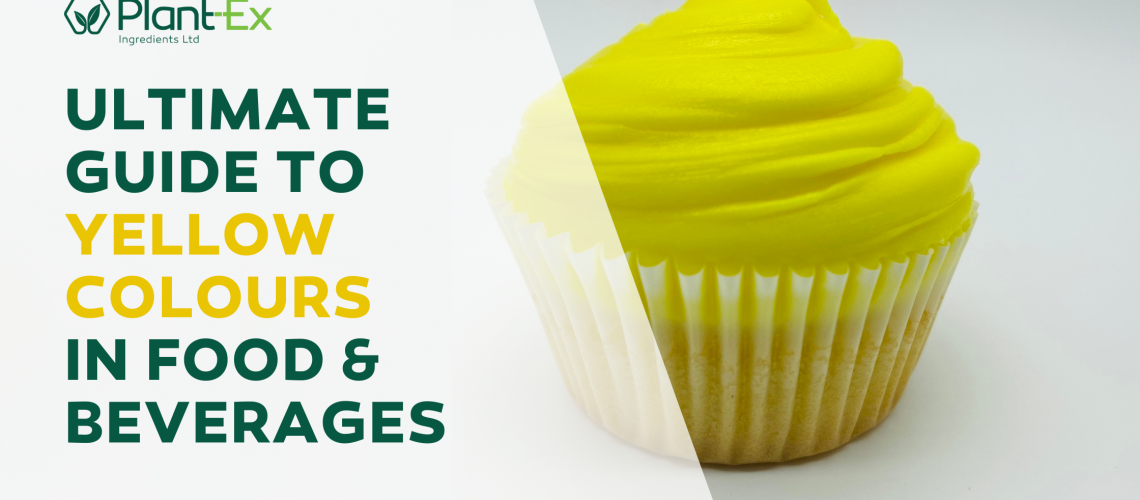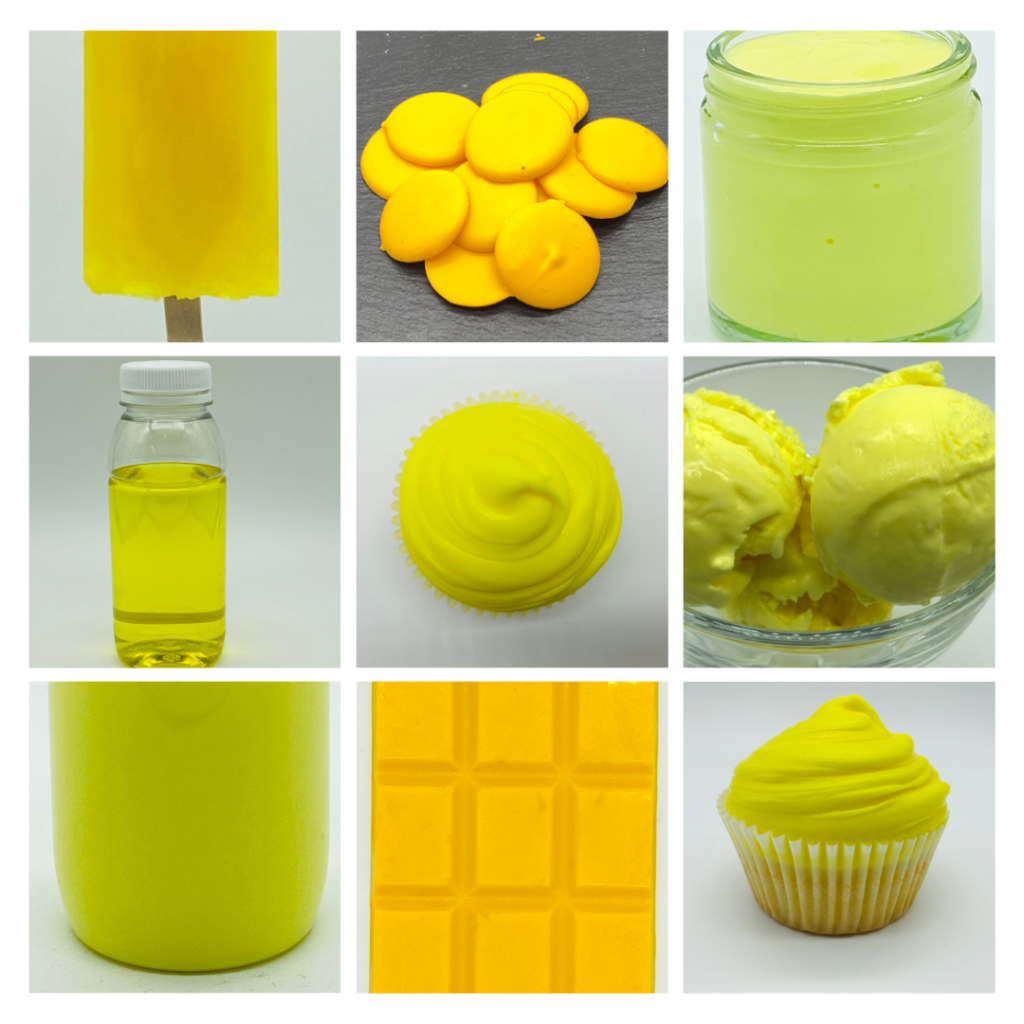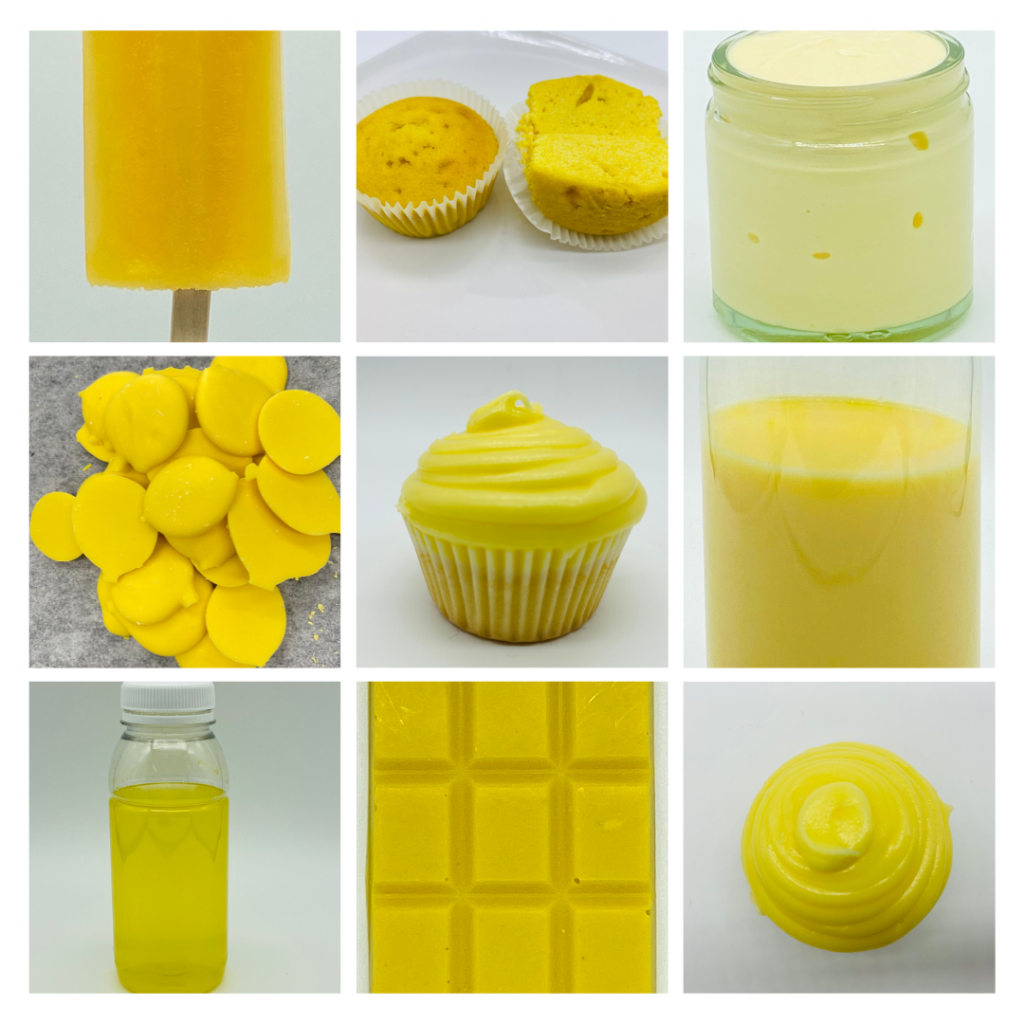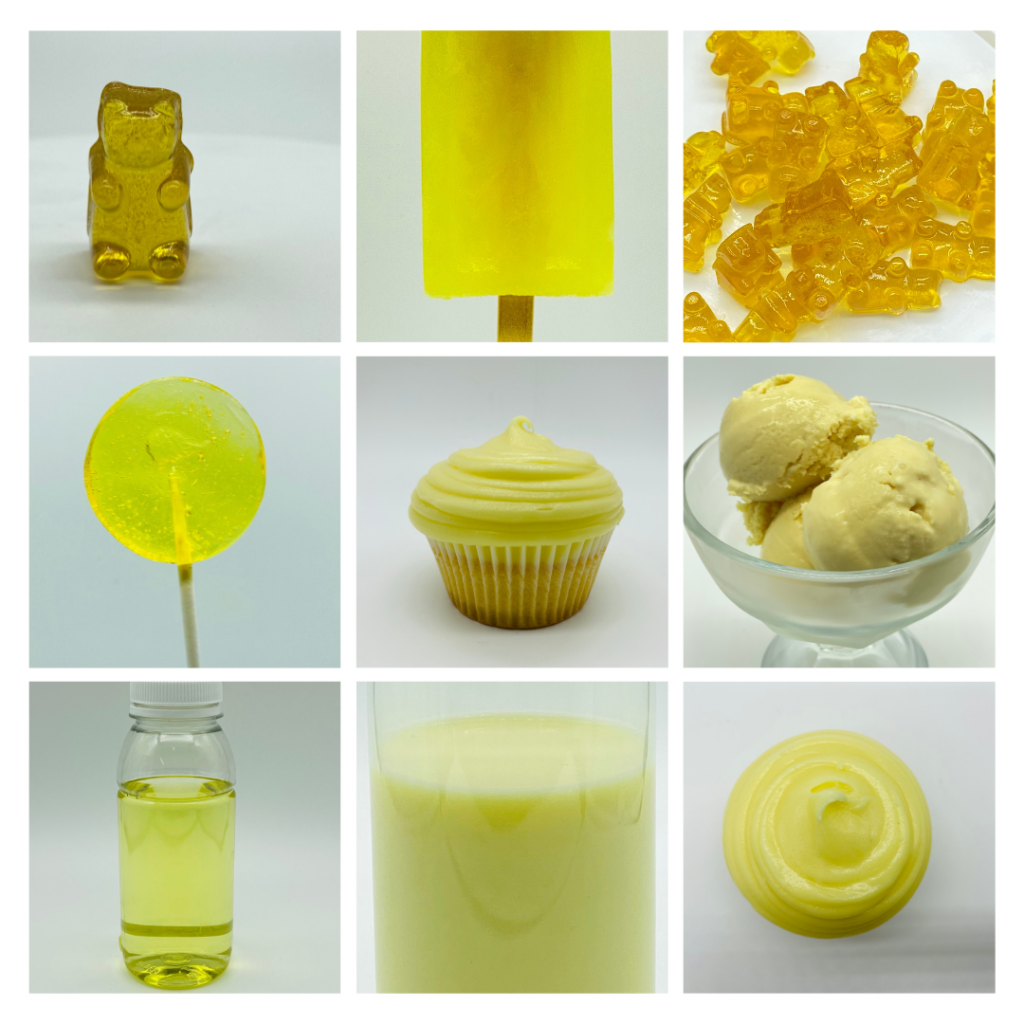Over the years, a lot of research has been done in order to demonstrate the link between certain colours, and how they make you feel. For example, it has been found that the colour yellow has a psychological effect when used in food or beverages; it is a cheery colour that frequently conveys happiness.
Yellow is a very popular colour and you can achieve a variety of pigments which are derived from different sources. For example, a lot of the yellow colours are derived from Turmeric and Marigold.
In this blog post, we will go through each yellow colour that Plant-Ex manufactures, in order to help you decide which is best suited to your application.
Curcumin E100
Curcumin is a naturally occurring pigment extracted from the roots of the Turmeric plant Curcuma longa. It has been widely used as a food ingredient for thousands of years, providing an earthy flavour and a warm, bright yellow colour.
Turmeric oleoresin is an extract used for its flavour and bright yellow-orange colour. The oleoresin contains up to 30% curcuminoids and can be made oil or water-soluble to suit a wide variety of savoury food applications. High-strength curcumin extracts are made by grinding the dried turmeric rhizome, yielding an extract with up to 95% curcuminoids. With a low-flavour and high-colour impact, curcumin extracts are suited to sweet as well as savoury applications.
Plant-Ex manufactures both Curcumin Extract and Turmeric Extract. These can be used interchangeably to give a similar shade, but the labelling will be different.
Curcumin has good heat stability but is not stable to light, so is best suited to products with opaque packaging where it is not exposed to UV. However, Plant-Ex’s Colours Specialists have created a light stable curcumin solution for bakery and confectionery applications (NC013691A Curcumin Extract LS). This is made by finely milling and encapsulating the pigment in order to improve the stability against oxidation.
NOTE: Curcumin LS, isn’t suitable for beverages.
Further research:
The below diagram demonstrates the difference in light stability using NC1050 Curcumin Extract against NC013694A Curcumin Extract LS. Both curcumin products had a ‘Dark Sample’ which was left in a dark cupboard for up to 7 days, as well as a ‘Light Sample’ which was left in a UV light box for the same time period. When NC1050 Curcumin Extract was exposed to the light, the colour faded rapidly, however when NC013691A Curcumin Extract LS was exposed to light, the colour performance was not significantly affected.


The photos below demonstrate show both the dark and light samples on day 7 of the experiment, highlighting how light stable NC013691A is.


For more information on this product, get in touch with our Sales Team and ask for a sample of ‘Curcumin LS’.
Suggested Applications: Snacks, Beverages, Bakery, Dairy, Confectionery, Sauces & Seasonings, Sports Nutrition, Meat & Fish.
In Summary:
| pH | Stable in range of 3 – 8 |
| Heat | Good |
| Light | Poor* |
Lutein E161b
Lutein is a a warm yellow-orange colour that is extracted from Marigolds. The pigment responsible for the yellow colour is called ‘Xanthophyll’, which is also the pigment responsible for the colour of egg yolks!
Lutein provides a warm, lemon-yellow colour when used at lower dosages, moving towards an orange-hue at high dosages. It is very stable in light and heat, so is perfect for baked sponges and clear packaging, and has a pH range of 3-8. Price-wise, lutein extract isn’t particularly expensive, and so it is recommended for a large variety of products.
Is is available in both oil and water-soluble liquids, as well as water-soluble powders.
Suggested Applications: Bakery, Beverage, Confectionery, Sauces & Seasonings, Dairy, Snacks.
In Summary:
| pH | Stable in range of 3 – 8. |
| Heat | Good |
| Light | Good |
Safflower
Safflower is a water-based colour extracted from the plant Carthamus tinctorius. Used as a food ingredient around the world, Safflower produces a clear bright yellow colour, and is suited to a variety of sweet and savoury applications. Safflower extract is simply processed juices, made without the use of solvents or chemical processing, and can therefore be classified as Colouring Foodstuffs. This means that you don’t need to declare an E-number on the back of the pack, and instead can declare it as ‘Safflower Extract’ – this is ideal for customers with a health-conscious target market, as no E-number needs to be declared.
Safflower has excellent stability to heat and light with a pH range of 3 – 8. It is suitable for use in a wide variety of sweet and savoury food and beverage applications. Unfortunately though, safflower extract is the most expensive natural yellow colour option Plant-Ex has to offer.
Available in water-soluble liquid formats, or spray dried into a water-soluble powder.
Suggested applications: Bakery, Confectionery, Beverages, Dairy, Sauces & Seasonings, Snacks.
In Summary:
| pH | Stable in range of 3 – 8. |
| Heat | Excellent |
| Light | Excellent |
In conclusion, there are a variety of yellow colours suited to lots of different applications to provide food manufacturers with their desired shade. As shown above; pH, heat and light all need to be considered in the processing and packaging of the product as they all have an effect on how the colours are to perform in your product.
Our team is ready to help you choose the right colour and dosage for your product! For more information on the colours, please contact us at sales@plant-ex.com
If you also want to look at our orange colours, check out our Ultimate Guide to Orange Colour in Foods & Beverages



